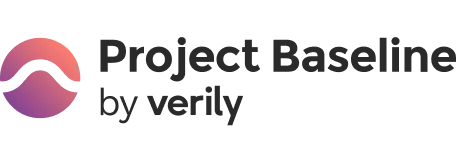Project Baseline
Verily dataset
Unlock unprecedented insights into human health and the transition to disease with the Verily Project Baseline Health Study (PBHS) dataset. This landmark longitudinal study, conducted by Verily in collaboration with Duke University, Stanford Medicine, and others, deeply characterizes approximately 2,500 diverse individuals over four years. The PBHS integrates extensive clinical assessments, medical imaging, continuous sensor monitoring via the Verily Study Watch, and rich participant-reported outcomes to create a comprehensive, multi-dimensional map of health. Leverage this unique, deeply phenotyped dataset to explore the definition of healthy baselines, explore early markers of disease, understand health trajectories, and develop new predictive health models using integrated, high-resolution data collected both in-clinic and in real-world settings.

Datasets
Project Baseline
Data Collection Time Frame
2017 - 2023
Participants
~2,500
Geographical Coverage
United States, with research sites in
California and North Carolina
Usage Examples
- Develop comprehensive definitions of healthy baselines by integrating long-term clinical assessments, physiological sensor data, and participant-reported outcomes.
- Identify patterns and early indicators from continuous sensor data (e.g., activity, sleep, heart rate from the Study Watch) that correlate with changes in health status, functional measures, or participant-reported well-being.
- Investigate relationships between participant-reported outcomes (e.g., mental health screeners, quality of life, pain) and longitudinal clinical measures or sensor-derived physiological patterns.
- Explore associations between annually collected clinical laboratory tests, vital signs, and physical performance measures over time to better understand health trajectories in a diverse cohort.
- Analyze medical imaging data in conjunction with clinical assessments and sensor data to identify potential sub-clinical indicators or phenotypic variations.
- Develop and validate predictive models for health state transitions or risk stratification based on integrated clinical data, wearable sensor information, and participant-reported outcomes.
- Conduct exploratory, hypothesis-generating research on the interplay of lifestyle factors (from surveys), physiological measures (from sensors and clinical assessments), and overall well-being.
- Utilize the deeply phenotyped dataset to externally validate hypotheses or findings generated from other health studies.
- Investigate associations between socioeconomic factors (from participant-reported surveys) and various health metrics, health behaviors, or outcomes within the study population.
- Explore the utility of granular sleep metrics and activity data from wearable sensors in understanding their impact on cardiometabolic health or mental health symptoms.
Data Modalities
Clinical Data
- Demographics
- Medical History (participant-reported during onsite visits, including personal and family history, immunizations, medications, hospitalizations, surgeries/procedures, allergies)
- Vitals (including blood pressure, pulse, body temperature, oxygen saturation, respiratory rate, height, weight, waist circumference; collected annually)
- Clinical Laboratory Tests (including Vitamin D, albumin-to-creatinine ratio, full chemistry panel, HbA1c, hematology panel, hsCRP, lipid panel, TSH, urinalysis; collected annually)
Functional Measures
- Physical Performance Tests (including 6-minute walk, 10-meter walk, 30-second chair stand, hand grip strength, single-legged balance, sitting-rising test; collected annually)
- Pulmonary Function Tests (spirometry)
Medical Imaging Data*
- Cardiac (including Resting and Stress Electrocardiogram (ECG) and Echocardiogram, Coronary Calcium Score (CCS))
- Chest X-ray
- Ophthalmology (including Keratometry & Corneal Tomography, Fundus Photography, Optical Coherence Tomography (OCT))
* Core lab reads
Wearables / Digital Health
- Sensor/Wearable Data (from Verily Study Watch, including activity, sleep, and heart rate metrics, collected continuously from the Study Watch while worn by participants in daily living through the duration of the study)
Participant-Reported Data
- Surveys / Questionnaires (including Patient-Reported Outcomes (PROs) like PANAS, PSS, EQ-5D-5L; mental health screeners like PHQ-9; health habits like AUDIT-C; collected at varying frequencies e.g., quarterly, semi-annually, annually)
- Self-Reported Health and Lifestyle Information (including physical activity, environmental factors, socioeconomic data)